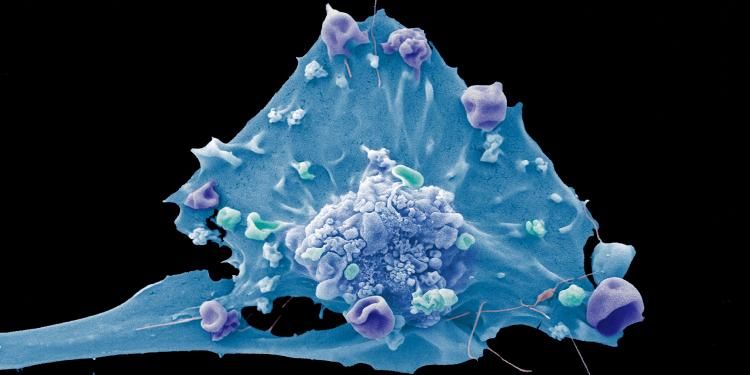Combination is key in triple negative breast cancer
Team SPECIFICANCER: Paving the way for a new era of precision oncology.

A new Nature paper from the Cancer Grand Challenges SPECIFICANCER team describes a mechanism through which oestrogen-induced DNA breaks and their repair by inter-chromosomal translocations initiate a cascade of events that result in oncogene amplification in breast cancer.
Focal copy-number amplification is a mechanism that drives cancer; however, the mutational events leading to these amplifications are not fully understood.
In this new study, led by SPECIFICANCER co-investigator Peter Park of Harvard Medical School, US, and his postdoctoral fellow Jake Lee, the researchers used whole-genome sequencing, RNA sequencing and epigenomic data to uncover the origin of focal oncogene amplifications in breast cancer.
The team found that in some breast cancer cases focal amplifications derive from a mechanism involving inter-chromosomal translocations that lead to dicentric chromosome bridge formation and breakage. They have termed this mechanism “translocation-bridge amplification”.
The study suggests that oestrogen has a direct impact on genome structure. In experiments using breast cancer cell lines, the team found that oestrogen treatment induced DNA double-strand breaks in the oestrogen receptor target regions that are subsequently repaired by translocation, ultimately resulting in oncogene amplification. The team also conducted a pan-cancer analysis to investigate the mechanisms of focal amplification in other tumour types.
“One of the fascinating aspects of our findings is the tissue specificity of the mechanisms that generate oncogene amplifications. We frequently observe translocation-bridge amplifications in some tumour types such as breast adenocarcinomas, soft tissue liposarcomas, bone osteosarcomas and skin melanomas. But we see that other mechanisms are more common in other tumour types. We think this is related to the different cell cycle phase in which chromosome breaks are repaired in different tissues.
All the information was already there in the published genomic profiles - we just had to think a bit harder about what series of events could have led to the patterns of complex genomic rearrangements we see on our computer screen."
The SPECIFICANCER team is funded by Cancer Research UK and The Mark Foundation for Cancer Research.
“The Mark Foundation is proud to be a supporter of this exciting finding in the development of certain breast cancers. Kudos to Peter Park, Jake June-Koo Lee, Stephen Elledge, and the entire SPECIFICANCER team.”
Find out more about the research in Harvard Medical School’s news article.
Image credit: Breast cancer cell. Anne Weston, Francis Crick Institute. Attribution-NonCommercial 4.0 International (CC BY-NC 4.0)
Team SPECIFICANCER: Paving the way for a new era of precision oncology.
New findings from team SPECIFICANCER.
Delving deeper into the biological laws that govern tissue specificity in cancer.